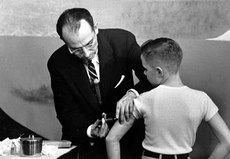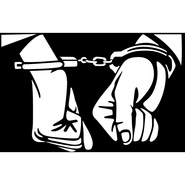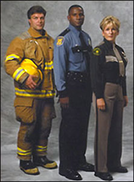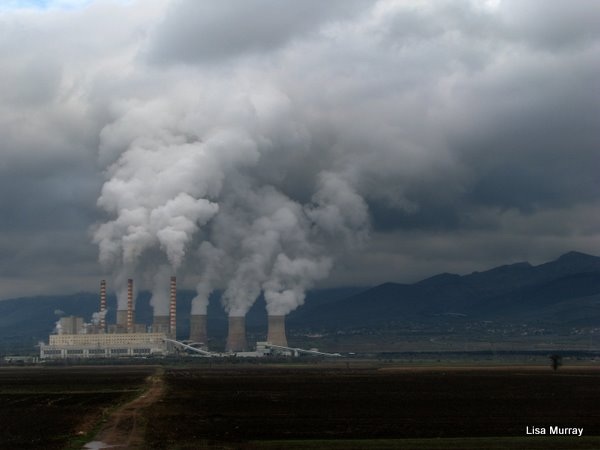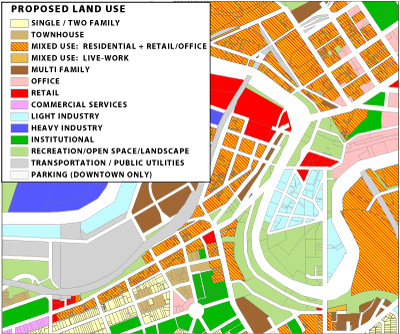Unit 4: State and Local Government
7a: What is the structure of Virginia’s state
government?
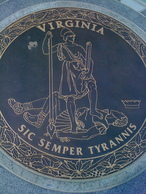
The form of government of the Commonwealth of Virginia is established by
the Virginia Constitution.
Legislative, executive, and judicial powers are separated at the state level of government.
The Virginia Constitution distributes power among the legislative, executive, and judicial branches of the state government.
The legislative branch is the General Assembly, a bicameral legislature (two houses, or chambers)—the House of Delegates and the Virginia Senate—that meets annually (yearly) for a fixed number of days.
The executive power is exercised by the governor, who is elected for a four-year term of office. The governor appoints members of the cabinet (advisors), who oversee specific functions of government.
The lieutenant governor and the attorney general are executive branch officers who are elected for a four-year term of office.
The judicial power is exercised by a court system that consists of four levels of courts:
· Supreme Court
· Court of appeals
· Circuit courts
· District courts (including small claims courts and juvenile and domestic relations courts)
the Virginia Constitution.
Legislative, executive, and judicial powers are separated at the state level of government.
The Virginia Constitution distributes power among the legislative, executive, and judicial branches of the state government.
The legislative branch is the General Assembly, a bicameral legislature (two houses, or chambers)—the House of Delegates and the Virginia Senate—that meets annually (yearly) for a fixed number of days.
The executive power is exercised by the governor, who is elected for a four-year term of office. The governor appoints members of the cabinet (advisors), who oversee specific functions of government.
The lieutenant governor and the attorney general are executive branch officers who are elected for a four-year term of office.
The judicial power is exercised by a court system that consists of four levels of courts:
· Supreme Court
· Court of appeals
· Circuit courts
· District courts (including small claims courts and juvenile and domestic relations courts)
7b: How does the Constitution of the United States of
America outline the division and sharing of
powers between the national and state governments?
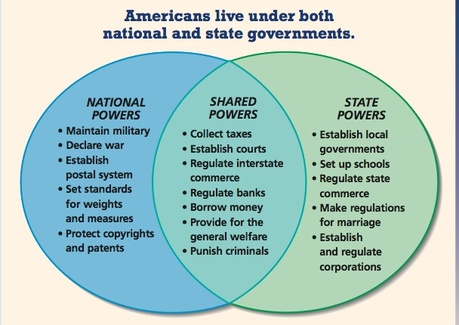
The Constitution of the United States of
America establishes the principle of
federalism, which is the division of power between the states and the national
government.
The expansion of the national government’s powers into areas traditionally reserved to the states has altered the relationship of
states to the national government.
The Constitution of the United States of
America establishes a federal form of
government in which the national government is supreme.
The powers not given to the national government by the Constitution of the United States of America are reserved to the
states.
The Constitution of the United States of America denies certain powers to both the national and state governments.
Primary responsibilities of each level of government:
· National: Conducts foreign policy (policy with other countries), regulates commerce (business), and provides for the common defense (military)
· State: Promotes public health, safety, and welfare (well-being)
Tensions exist when federal mandates require state actions without adequate funding (money).
America establishes the principle of
federalism, which is the division of power between the states and the national
government.
The expansion of the national government’s powers into areas traditionally reserved to the states has altered the relationship of
states to the national government.
The Constitution of the United States of
America establishes a federal form of
government in which the national government is supreme.
The powers not given to the national government by the Constitution of the United States of America are reserved to the
states.
The Constitution of the United States of America denies certain powers to both the national and state governments.
Primary responsibilities of each level of government:
· National: Conducts foreign policy (policy with other countries), regulates commerce (business), and provides for the common defense (military)
· State: Promotes public health, safety, and welfare (well-being)
Tensions exist when federal mandates require state actions without adequate funding (money).
7c: How does the Virginia General Assembly make laws?
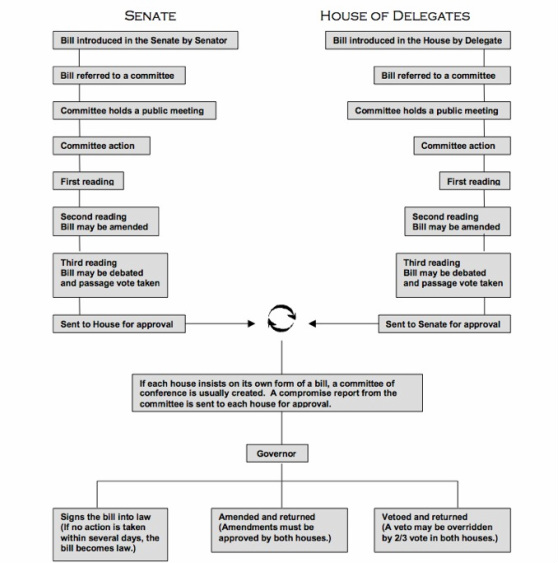
Members of the Virginia General Assembly are elected to
make state laws.
The lawmaking
process in the Virginia General
Assembly
· Introducing a bill
· Working in committees
· Debating the bill on the floor of each house
· Voting on the bill in each house
· Sending the bill to the governor to sign into law
Elected officials in the Virginia General Assembly write
laws and take action in response to problems or issues.
Individuals and interest groups help shape legislation (laws).
The primary issues in the legislative process at the state level
· Education: To promote an informed and engaged citizenry (i.e., establish minimum standards
for local schools)
· Public health: To promote and protect the health of its citizens (i.e., fund health benefits)
· Environment: To protect natural resources (i.e., improve water quality in the Chesapeake Bay)
· State budget: To approve a biennial (two year) budget prepared by the governor
· Revenue: To levy and collect taxes
make state laws.
The lawmaking
process in the Virginia General
Assembly
· Introducing a bill
· Working in committees
· Debating the bill on the floor of each house
· Voting on the bill in each house
· Sending the bill to the governor to sign into law
Elected officials in the Virginia General Assembly write
laws and take action in response to problems or issues.
Individuals and interest groups help shape legislation (laws).
The primary issues in the legislative process at the state level
· Education: To promote an informed and engaged citizenry (i.e., establish minimum standards
for local schools)
· Public health: To promote and protect the health of its citizens (i.e., fund health benefits)
· Environment: To protect natural resources (i.e., improve water quality in the Chesapeake Bay)
· State budget: To approve a biennial (two year) budget prepared by the governor
· Revenue: To levy and collect taxes
7d: What are the roles and powers of the executive branch at the state level?
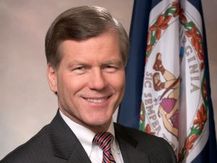
VA Governor Bob McDonnell
The executive branch of the Virginia state government
enforces the laws and plays a key role in the policymaking process.
The governor of Virginia exercises the formal powers granted by the Virginia Constitution.
In carrying out both the formal and informal powers of the office, the governor fills several roles, including
· chief of state (head of executive branch)
· chief legislator (can propose laws)
· chief administrator (heads the state bureaucracy, or departments)
· party chief (head of the political party he/she represents)
· commander-in-chief (head of the Virginia National Guard)
Cabinet secretaries and departments, agencies, commissions, and regulatory boards
· administer laws
· enforce laws
· regulate aspects of business and the economy
· provide services.
enforces the laws and plays a key role in the policymaking process.
The governor of Virginia exercises the formal powers granted by the Virginia Constitution.
In carrying out both the formal and informal powers of the office, the governor fills several roles, including
· chief of state (head of executive branch)
· chief legislator (can propose laws)
· chief administrator (heads the state bureaucracy, or departments)
· party chief (head of the political party he/she represents)
· commander-in-chief (head of the Virginia National Guard)
Cabinet secretaries and departments, agencies, commissions, and regulatory boards
· administer laws
· enforce laws
· regulate aspects of business and the economy
· provide services.
8a: Which powers do local government exercise?
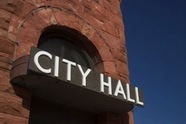
The units of local governments in Virginia are political subdivisions created by the General Assembly.
The units of local government in Virginia are counties, towns, and cities. Local governments exercise legislative, executive, and judicial powers.
Each Virginia county has an elected board of supervisors, which exercises legislative powers, enacting ordinances (local laws) and adopting an annual (yearly) budget.
Each Virginia county and city has an elected or appointed school board, which oversees the operation of the K–12 public schools in the county or city.
Each Virginia incorporated town has an elected town council, which exercises legislative powers, enacting ordinances and adopting an annual budget. A mayor is elected either by the voters or the town
council members.
Each Virginia city has an elected city council, which exercises legislative powers, enacting ordinances and adopting an annual budget. A mayor is elected either by the voters or the city council members.
In Virginia counties, towns, and cities, a manager may be hired by the elected legislative branch to oversee the operations of the local government.
In every Virginia locality, state courts resolve judicial disputes. Judges of the circuit courts, district courts, juvenile and domestic relations courts, and small claims courts hear cases in each locality.
The Virginia Constitution requires that voters in every locality elect a sheriff, a clerk of the circuit court, a commissioner of revenue, and a treasurer.
Virginia local governments exercise defined and limited powers, including the power to:
The units of local government in Virginia are counties, towns, and cities. Local governments exercise legislative, executive, and judicial powers.
Each Virginia county has an elected board of supervisors, which exercises legislative powers, enacting ordinances (local laws) and adopting an annual (yearly) budget.
Each Virginia county and city has an elected or appointed school board, which oversees the operation of the K–12 public schools in the county or city.
Each Virginia incorporated town has an elected town council, which exercises legislative powers, enacting ordinances and adopting an annual budget. A mayor is elected either by the voters or the town
council members.
Each Virginia city has an elected city council, which exercises legislative powers, enacting ordinances and adopting an annual budget. A mayor is elected either by the voters or the city council members.
In Virginia counties, towns, and cities, a manager may be hired by the elected legislative branch to oversee the operations of the local government.
In every Virginia locality, state courts resolve judicial disputes. Judges of the circuit courts, district courts, juvenile and domestic relations courts, and small claims courts hear cases in each locality.
The Virginia Constitution requires that voters in every locality elect a sheriff, a clerk of the circuit court, a commissioner of revenue, and a treasurer.
Virginia local governments exercise defined and limited powers, including the power to:
8b: What is the relationship between the state government and local governments in Virginia?
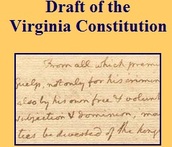
All powers of local governments in Virginia are given to them by the Constitution of Virginia and acts of the General Assembly.
Not all counties and cities are given the same powers. Cities have charters listing their powers.
Not all counties and cities are given the same powers. Cities have charters listing their powers.
8c: How do localities enact ordinances?
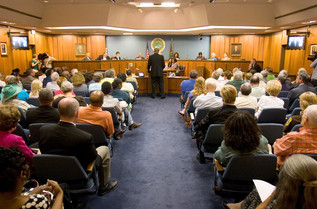
Counties, cities, and towns adopt and enforce ordinances (local laws) to provide services for their residents.
An elected board of supervisors is the local legislative body in counties and is responsible for passing laws (ordinances) for the county.
An elected council is the local legislative body in independent cities and incorporated towns.
Individuals can have the greatest influence on the decisions made by local government officials.
An elected board of supervisors is the local legislative body in counties and is responsible for passing laws (ordinances) for the county.
An elected council is the local legislative body in independent cities and incorporated towns.
Individuals can have the greatest influence on the decisions made by local government officials.
9c: Which international issues and events would require
local government officials to act?
Local governments may be required to formulate, adopt, and implement public policies in response to international issues and events.
International issues and events that would require policy decisions by local government officials could include the following:
International issues and events that would require policy decisions by local government officials could include the following:
